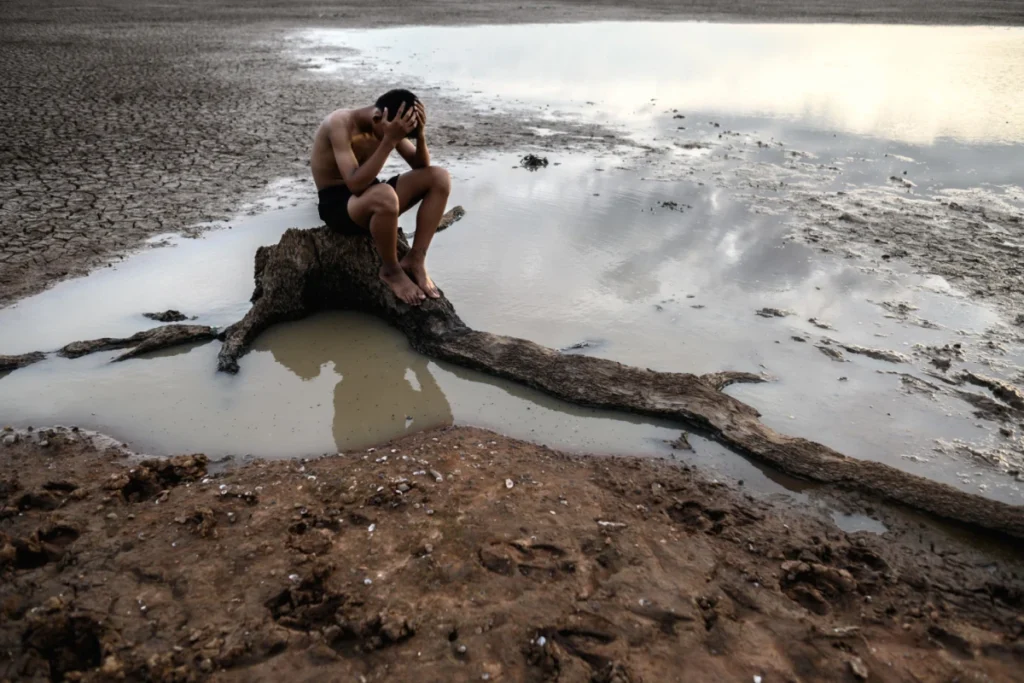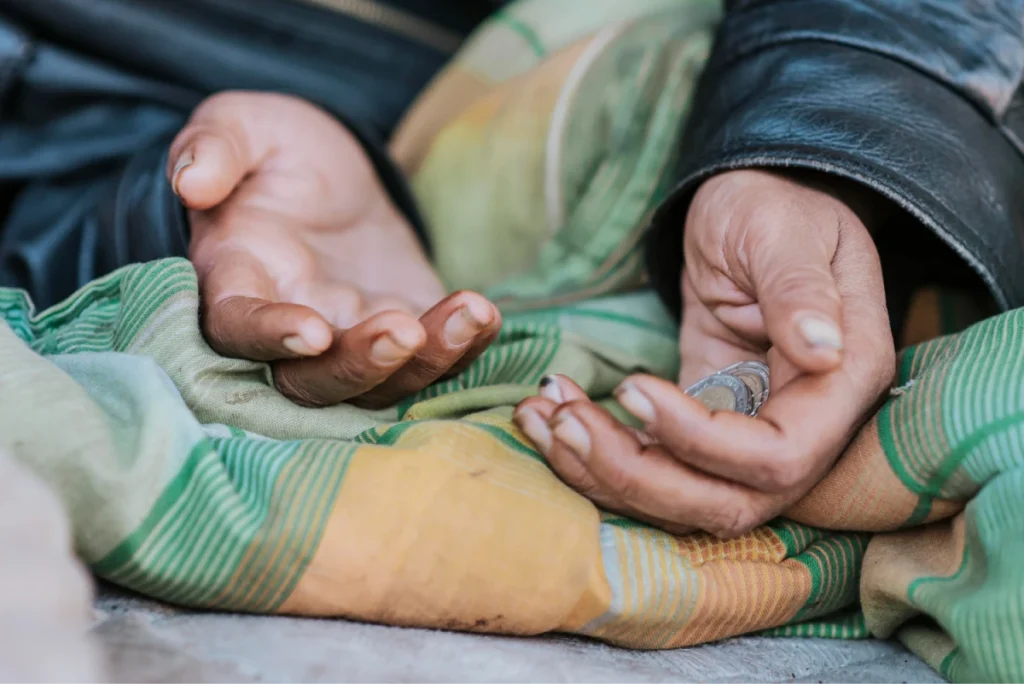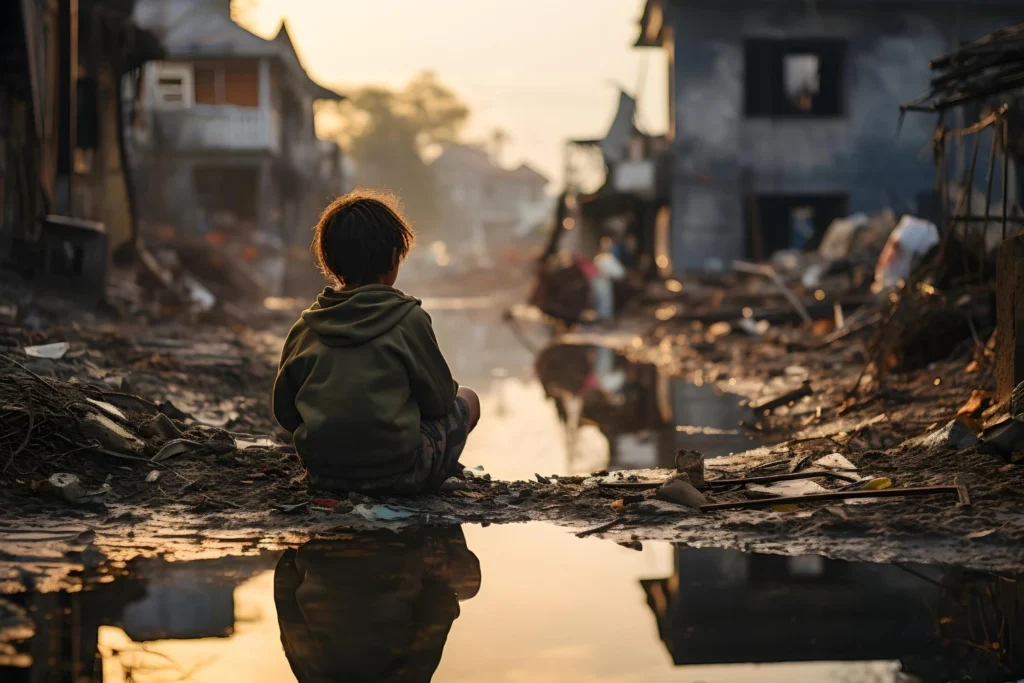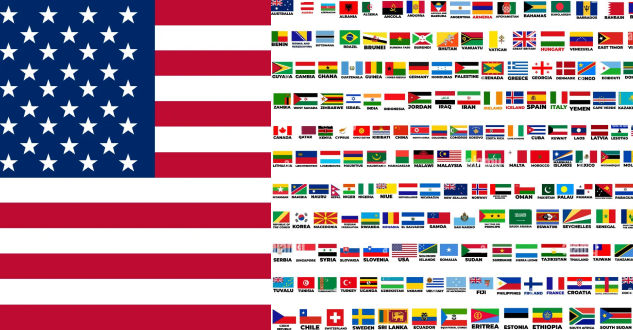Poverty affects millions of people around the world and has many causes that are connected in complex ways. This article looks at nine major causes of poverty, such as lack of access to basic needs, health problems, and social and economic factors. Other causes include climate change, unemployment, natural disasters, conflict, malnutrition, inequality, and food insecurity. By understanding these causes, we can find ways to reduce poverty.
Lack of Access to Basic Necessities
Access to basic necessities is important for human survival and well-being. When people lack these essentials, it often leads to a cycle of poverty that’s hard to break. Let’s look at three key areas where lack of access has a significant impact.
Food Insecurity
Food insecurity is a major issue that affects millions of people worldwide, occurring when people lack reliable access to enough nutritious food. In 2009, during the Great Recession, 11% of households with children in the United States faced food insecurity. This problem affects nearly half of all families with incomes above the official poverty line. The consequences are far-reaching, with children facing cognitive development issues, school achievement problems, and socio-emotional challenges. Food insecurity can also lead to chronic health conditions like heart disease and diabetes, as well as mental health issues such as depression, anxiety, and stress.

Water Scarcity
Water scarcity is a critical issue closely linked to poverty, with 748 million people lacking access to safe water and 2.5 billion without adequate sanitation. Safe water means having consistent access to clean water for drinking, bathing, cooking, and cleaning, with a source less than 1 kilometer away and at least 20 liters per person per day. The lack of safe water leads to severe consequences, including water-related illnesses that occupy about half of the hospital beds in developing countries. It also impacts education, with an estimated 443 million school days lost each year due to water-related illness. Women and girls are disproportionately affected, often spending hours fetching water, which keeps them out of school and the workforce.

Inadequate Shelter
Inadequate housing is a significant factor in perpetuating poverty, affecting children’s health and development. Poor conditions, like dampness, lack of heating, and inadequate space, can persist throughout childhood, with 7% of children living in homes their parents couldn’t afford to keep warm. These conditions lead to worse health outcomes, more accidents, and injuries requiring medical treatment. Children in inadequately heated homes are more likely to have respiratory problems, such as wheezing. Overall, inadequate housing has a substantial impact on children’s well-being and health.
Health-Related Causes of Poverty
Health and poverty are closely related, creating a cycle that affects millions of people worldwide. Poor health can lead to poverty, while poverty often results in poor health outcomes. This section explores the health-related causes of poverty, focusing on lack of healthcare access, prevalence of diseases, and malnutrition as well as its effects.
Lack of Healthcare Access
Limited access to healthcare services is a major factor in perpetuating poverty. For many living in poverty, the cost of medical care can be overwhelming. Expenses for doctors’ fees, medications, and transportation to health centers can severely impact individuals and their families. Sometimes, the financial burden of illness forces families to sell property, take children out of school to earn money, or even resort to begging. This lack of healthcare access disproportionately affects women. Often, female relatives take on the responsibility of caring for sick family members, which may require them to give up their education or take on additional work to help meet household costs. This situation has long-term implications for women’s future opportunities and their own health.
Prevalence of Diseases
Certain diseases are more prevalent among populations living in poverty, creating a vicious cycle that’s hard to break. HIV, diarrhea, tuberculosis, and malaria are some of the most deadly communicable diseases affecting impoverished communities. Diarrhea, pneumonia, and malaria alone account for nearly half of all child deaths globally. The economic impact of these diseases is substantial. In 2007, there were 1.7 million HIV-related deaths and 990,000 deaths from tuberculosis, mostly among young people and adults in their most productive years. In heavily affected countries, billions of dollars of economic activity are lost each year due to illness and death from HIV, TB, and malaria. Malaria alone reduces economic growth by 1.3% in heavily affected countries and costs around $12 billion in lost GDP across Africa.

Malnutrition and Its Effects
Malnutrition is both a cause and consequence of poverty, creating a cycle that’s hard to break. People living in poverty often can’t afford safe, sufficient, and nutritious food. This food insecurity means they don’t get enough calories for daily activities, affecting their ability to work and earn money. Poverty can lead to eating cheap, high-energy foods like carbohydrates and fats instead of nutritious food. This results in poor nutrition and deficiencies in essential nutrients like iron, folate, vitamin A, iodine, and zinc, which are common among women and children in low- and middle-income countries.
Socioeconomic Factors
Socioeconomic factors, including unemployment, underemployment, debt cycles, and lack of social mobility, play crucial roles in maintaining poverty.
Unemployment and Underemployment
Unemployment and underemployment are big contributors to poverty. During economic downturns, people often struggle to find new jobs or can only secure part-time work. The unemployment rate, which measures the percentage of adults in the labor force without jobs, doesn’t show the full picture. Many people are underemployed, working in jobs that don’t use their skills or provide full-time hours. The working poor, those employed full-time but still living below the poverty line, are more common in the United States compared to other developed countries. In 2016, out of the approximately 17 million U.S. households living in poverty, 5.3 million were headed by millennials.

Debt Cycles
Debt cycles keep many Americans in poverty. Credit card debt has reached record levels, surpassing $930 billion, up from $870 billion in 2008. Student loan debt affects 45 million people, totaling $1.5 trillion, with an average of $33,000 per borrower. Medical expenses account for more than half of all overdue debt that Americans owe. Racial disparities are clear, with 27% of Black households delinquent on debt payments compared to 15% of White households.
Lack of Social Mobility
Social mobility, or the ability to move up the economic ladder, plays an important role in maintaining or getting rid of poverty. A study found that poor children who grow up in certain cities and towns have better odds of escaping poverty than similar poor children elsewhere. Perceptions of social mobility also impact attitudes towards poverty. Individuals who experience upward social mobility are more likely to attribute their success to their own efforts and abilities. This self-serving bias can influence how people view the causes of poverty.

Conclusion
Poverty’s root causes are complex and interconnected. This article explored ten major factors, including lack of access to basic necessities, health issues, and socioeconomic challenges. These factors deeply impact people’s lives, making it hard to escape poverty. Understanding these causes is key to finding ways to reduce poverty and create a fairer world. Addressing poverty requires improving access to food, water, shelter, healthcare, and education. Tackling unemployment, debt cycles, and barriers to social mobility is also crucial. By working on these areas, we can help more people build better lives for themselves and their communities. If you want to learn more about how you can support kids in need in Mexico, visit The Children’s Foundation International!
Children’s Foundation International (CFI) is dedicated to transforming the lives of children and families in need by providing comprehensive support and resources. With a focus on health, education, and community development, CFI strives to create lasting, positive change. Our programs are designed to address the unique needs of each community, ensuring that every child has the opportunity to thrive and reach their full potential. Through strategic partnerships and innovative solutions, Children’s Foundation International is committed to building a brighter future for children worldwide. To learn more about our mission and impact, visit tcfcares.org.





